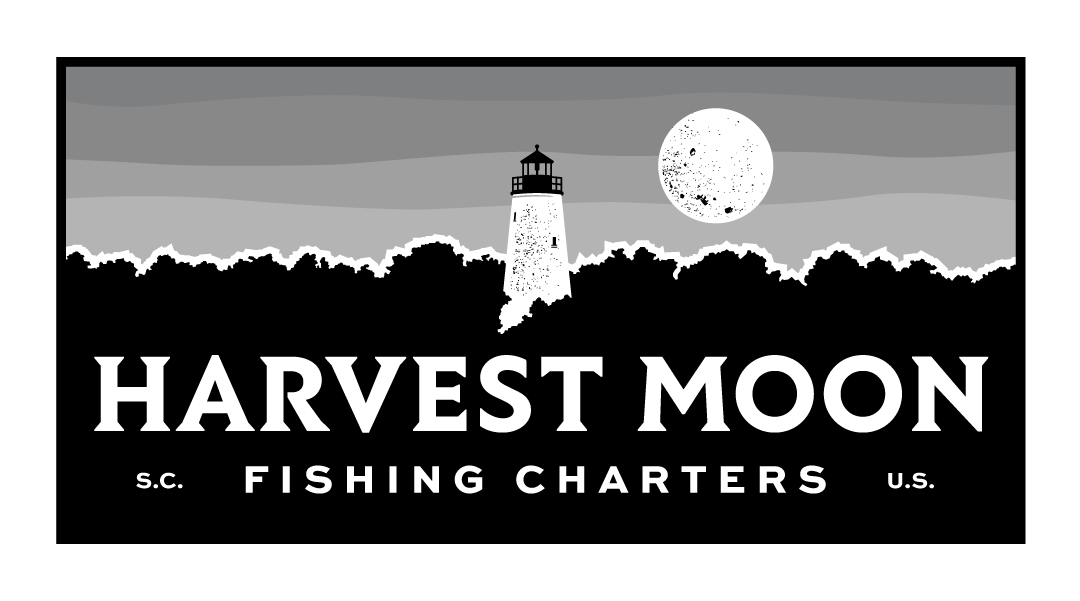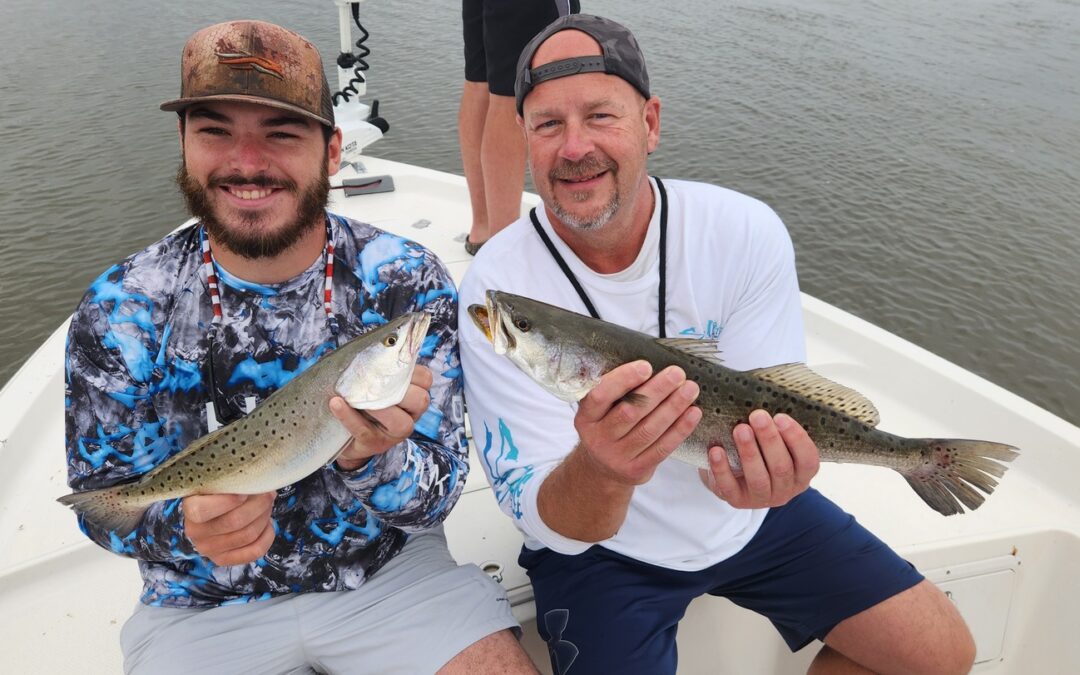Last Updated on February 15, 2024 by Capt. R.C.
In Myrtle Beach, SC, April showers bring May flowers and good fishing charters for hours! As we put March and April behind us, May is the month where the inshore Redfish, Trout, and Flounder fishing picks back up. If you’re looking for a fishing trip this time of year, you will be happy to know you’re hitting it right!
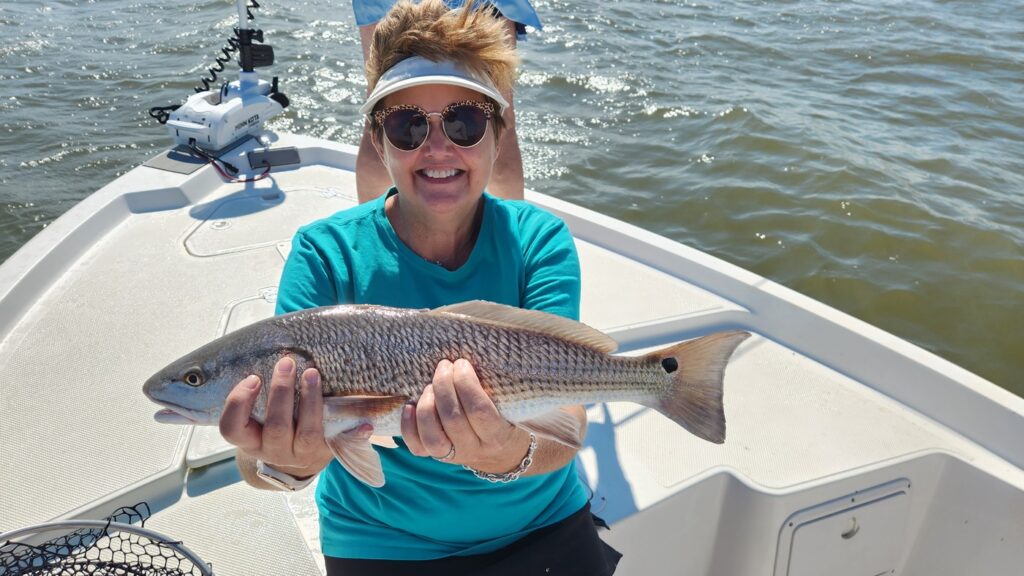
Red Drum begin finding their pattern in the month of May
Myrtle Beach Inshore Fishing in the Month of May
- Red Drum
- Speckled Trout
- Flounder
This is the time of year when our year-round species are back in a good mood! As we get past what’s known as the spring transition, Myrtle Beach’s top three species show up hungry for dinner. The month of May is one of the best for catching inshore grand slams of Redfish, Spotted Seatrout, and Flounder.

Myrtle Beach Redfish become more active beginning in the month of May.
Redfish are probably the most treasured inshore species in Myrtle Beach, South Carolina. We catch them year-round here, but they seem to get a little more frisky as we get in to May. It seems like, after a long lazy Winter, the Redfish are ready to pounce on everything from live bait to artificial.
The uptick in Redfish action comes after these fish have separated from their large Winter schools, and worked their way through the funky Spring. As they break up from their schools, the estuaries in Myrtle Beach and Little River go through what we call ‘peeler season’. This is when the Blue Crabs begin to shed their shells, a process necessary for their growth. When this happens, it makes the crabs an easy target for even the laziest of Redfish, and it makes it that much more challenging to get them to bite anything else.
Now that May is here, the Blue Crabs’ shells have hardened, and Redfish are back on the prowl. The water temperatures are warming, and baitfish are beginning to fill the creeks. The Reds are burning more energy, and they need fuel to keep going. This time of year is when the Redfish are most willing to take your bait, so make sure you get out there!
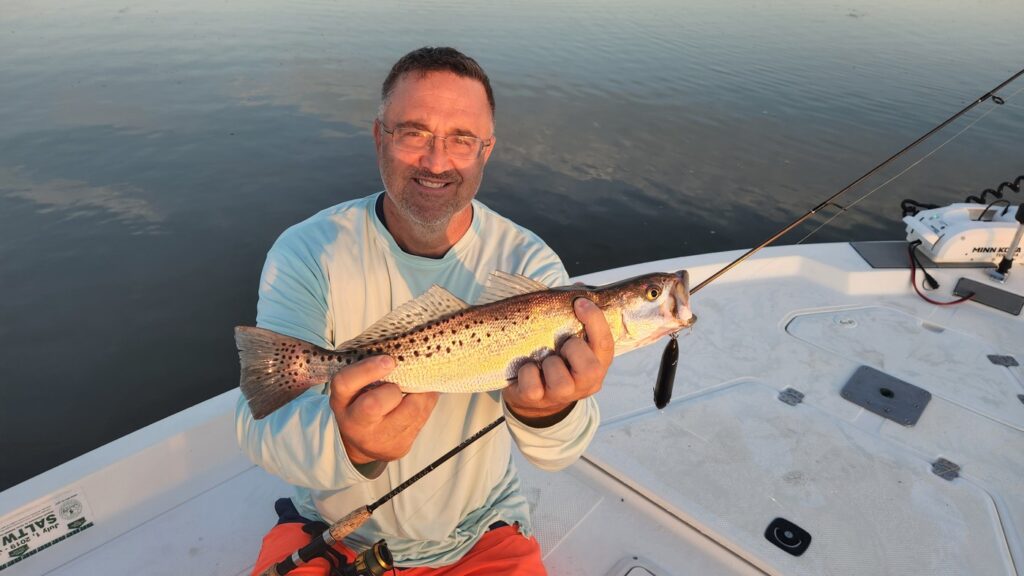
An added bonus to May’s warming water temperatures is catching Speckled Trout on topwater!
The Spring season, and warmer water, has the Spotted Seatrout coming out of their deep Winter holes where they laid dormant through the cold Winter. Every May, it seems like the Speckled Trout have worked up a healthy appetite as they prepare for their first spawn of the year.
Spotted Seatrout live out their lives as full time residents in Myrtle Beach, and they spawn more frequently than other species. This contributes to their sustainability as a fishery along the Grand Strand.
Live shrimp are not yet available this time of year, but you can get Trout to bite live minnows or artificial shrimp. If they are staging for a spawn, you might find that they are spread out. I feel like this probably has to do with them being territorial while trying to reproduce. In this case, you will want to keep moving along, slowly and steadily, as you are fishing.
As the water temperature rises and the days grow longer, the Spotted Seatrout become more active along the shores of Myrtle Beach. Their distinctive silver bodies and dark spots make them a prized catch for many fishermen in the area. Targeting Spotted Seatrout on fishing charters in the spring can provide an unforgettable fishing experience in the beautiful waters of Myrtle Beach.
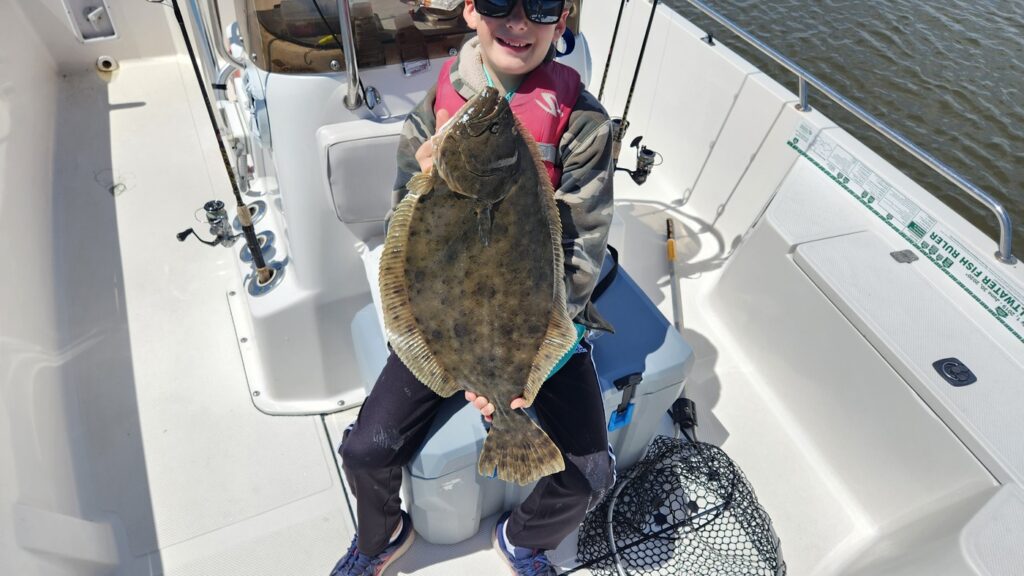
Myrtle Beach is benefitting from strict Flounder regulations in North Carolina
While Flounder are somewhat of a year-round fishery for Myrtle Beach fishing charters, most of them venture out to the ocean during the coldest months of the year. They come back inshore, in the Spring, following the bait and their spawning instincts.
Flounder seem to show up first in the saltwater creeks, around March and April, but then we start catching them in the bays around the month of May. The larger fish show up in the bays, but you can catch more numbers in the saltwater creeks. This is noted in our article about fishing in April, when Flounder are possibly the most reliable target.
We will troll or drift, specifically for Flounder, earlier in the Spring; but we catch them while targeting Reds and Trout during May. Many of the larger Flounder we have caught during May have been caught on a minnow under a cork. It seems like the Flounder’s angle of attack is more favorable for getting a hook set when suspending bait from a cork.
As the weather warms up and Spring progresses into Summer, the Flounder fishing action only gets better along the coast of Myrtle Beach. Experienced fishermen know that targeting Flounder can be a rewarding experience, especially when using live bait such as mud minnows or finger mullet. The key is to locate the right spots where Flounder tend to congregate, such as around oyster beds, grassy flats, and near structure like docks or bridges. Patience and a good understanding of Flounder behavior can greatly improve your chances of landing a nice catch during the Summer months.

Good numbers of Flounder can be caught in the creeks of Little River
Nearshore Fishing Myrtle Beach During the Month of May
- Weakfish
- Spanish Mackerel
- Cobia
May can be somewhat of a transitional period for nearshore fishing, but there are still opportunities for action on nice days. There are options like Weakfish, Spanish Mackerel, and Cobia. As we get closer to June, your chances for King Mackerel also tend to get better.
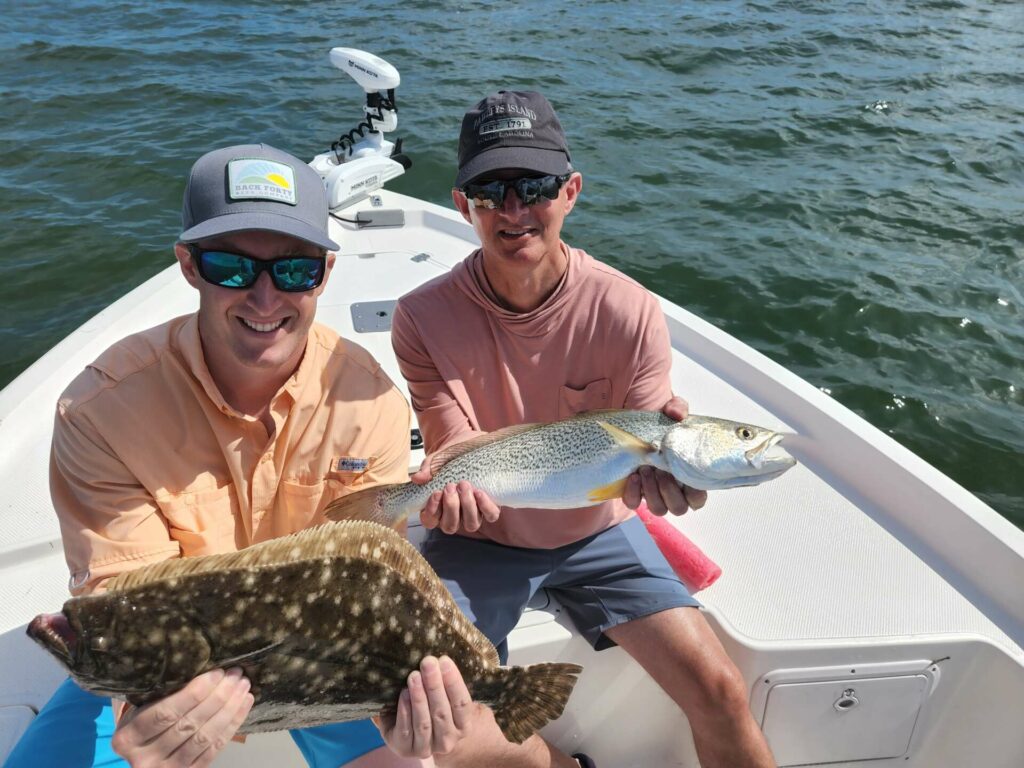
Flounder will join the Weakfish on Myrtle Beach’s nearshore reefs as we get closer to June.
Weakfish, also known as Grey Trout, can be caught on the artificial reefs in Myrtle Beach, South Carolina. These fish are very similar to Spotted Seatrout, with subtle differences in the spots on their body. Like Speckled Trout, Weakfish make excellent table fare.
We normally fish for Weakfish with a minnow near the bottom of the reef. I also like using a tandem Buck Tail rig that I tie, myself. The preferred technique is to slightly jig your minnow or Buck Tails, while keeping them close to the bottom. This does two things, it gives your bait some action, and it helps you keep the right amount of tension on the line to feel their bite.
Charter fishing for Weakfish in Myrtle Beach is not only a thrilling experience for anglers, but it also offers the opportunity to enjoy the beautiful coastal scenery and the refreshing ocean breeze. As you wait for a bite, you can soak in the view from the ocean and the excitement of what might be lurking beneath the surface. The anticipation of reeling in a feisty Weakfish adds an element of adventure to your day out on the water, creating memories that will last long after the fishing trip is over.
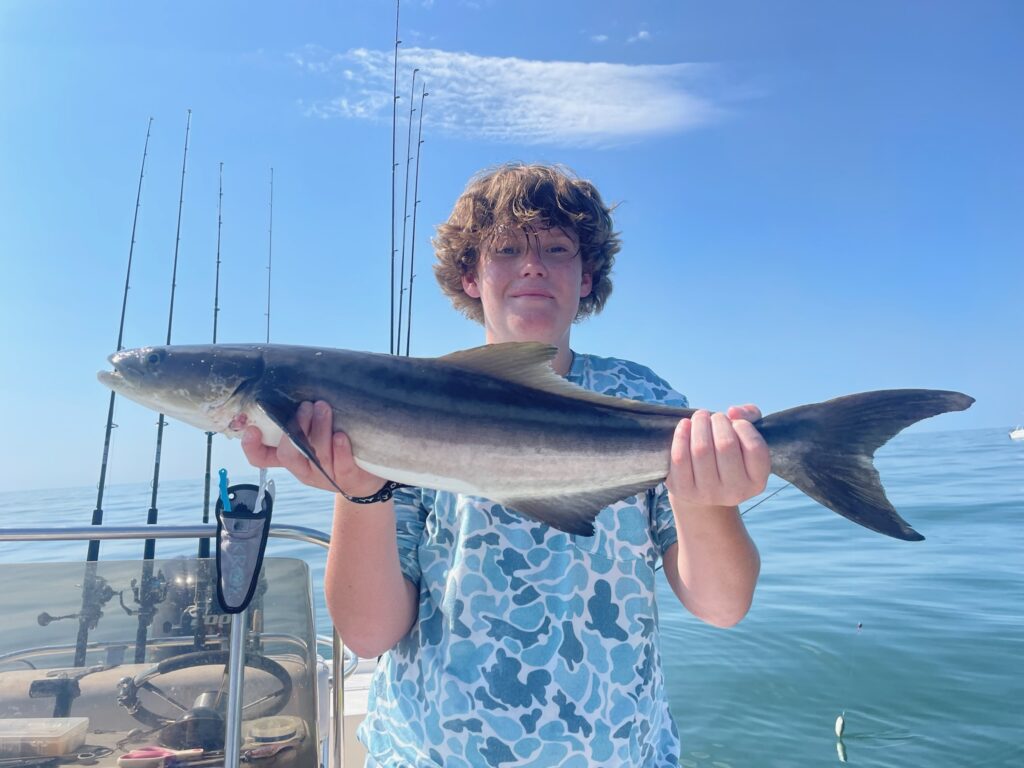
Cobia are a great option for those looking for a more challenging experience
Cobia can be caught pretty close to Myrtle Beach, but we tend to do better by venturing out to around 80 feet of water. It seems like these fish just prefer a little bit deeper water during May in Myrtle Beach.
Sometimes we are able to sight cast to them, when we see them lingering around stingrays or floating structure. However, most of the time we will catch them on the bottom or in a chum slick. The bait of choice is menhaden, but they can also be caught using Buck Tails. We target them with menhaden on the bottom or on the surface with chum. If using a Buck Tail, you just cast the bait in front of the fish, and let it sink. Give them time to get it in their mouth, set the hook, and hold on!
During May in Myrtle Beach, anglers targeting cobia should be prepared for some exciting battles once the fish is hooked. Cobia are known for their strength and fighting ability. Anglers need to be patient and ready to maneuver the fish away from any obstacles or structures that could lead to a lost catch. It’s important to have the right gear and equipment to handle these powerful fish, ensuring a successful and memorable fishing experience in the waters off Myrtle Beach.
Spanish Mackerel continue their presence during the month of May in Myrtle Beach. They can be targeted by trolling around the nearshore reefs, and sometimes right off the beach. We prefer to hit the schools that are feeding on the surface as we happen upon them. Finding these schools can be fast and furious, with the instant gratification of multiple bites on every cast!
The thrill of hooking Spanish Mackerel as they dart across the water and put up a spirited fight is a favorite among anglers in Myrtle Beach during the month of May. The shimmering silver bodies of these fish gleaming in the sunlight as they chase after baitfish creates a spectacle that never fails to excite. As the warm spring days lengthen and the waters teem with life, the opportunity to connect with these high-speed predators brings a sense of adventure and joy to each fishing trip.
The Myrtle Beach Inshore Bite is on in May!
While the Spring Transition behind us, inshore fishing in Myrtle Beach turns on during the month of May. This is one of the best times of year for confidently accomplishing the inshore grand slam. If you’re looking for a good time, book your fishing charter today!
